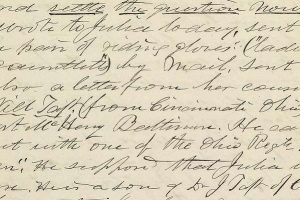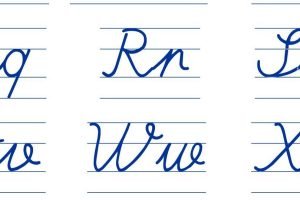If you were born in the 80s or earlier, then you probably learned cursive handwriting in school. It was an essential part of education, and many schools considered it as a fundamental skill that every student must learn. However, in the age of digital communication, cursive handwriting seems to have lost its charm. Nevertheless, cursive handwriting is still a valuable skill, and learning it can have several benefits. In this post, we’ll explore the art of cursive handwriting and why it’s worth learning.
What is Cursive Handwriting?
Cursive handwriting is a form of penmanship that connects letters together to form words. The word cursive comes from the Latin word “currere,” which means to run. When writing in cursive, the letters flow together, making it faster to write and more efficient than printing.
The History of Cursive Handwriting
Cursive handwriting has been around for thousands of years, with its earliest form dating back to the Roman Empire. The style of handwriting has evolved over time, with different cultures and languages adopting their own styles. In the 19th century, cursive handwriting became a popular form of penmanship in the United States and was taught in schools across the country.
The Benefits of Learning Cursive Handwriting
1. Improved Hand-Eye Coordination: Writing in cursive requires a higher level of hand-eye coordination than printing. It requires you to pay attention to the movement of your hand, the pen, and the paper. This can help improve your fine motor skills, making it easier to do other tasks that require dexterity.
2. Better Memory Retention: Studies have shown that writing things down by hand can help improve memory retention. This is because when you write, you engage different parts of your brain, which helps you remember things better.
3. Enhanced Creativity: Cursive handwriting can help enhance creativity and self-expression. It allows you to personalize your writing style and add a unique flair to your written communication.
4. Improved Brain Development: Writing in cursive can help improve brain development, especially in children. It requires them to use more parts of their brain, which can lead to better cognitive function.
How to Learn Cursive Handwriting
1. Start with Basic Strokes: Before you can start writing words, you need to master the basic strokes that make up cursive handwriting. These include the undercurve, overcurve, and slant.
2. Practice, Practice, Practice: Like any skill, learning cursive handwriting requires practice. Set aside time each day to practice your handwriting, starting with individual letters and then progressing to words and sentences.
3. Find a Good Guide: There are several guides available online or in bookstores that can help you learn cursive handwriting. Look for guides that provide step-by-step instructions and practice sheets.
Conclusion
Cursive handwriting may not be as popular as it once was, but it’s still a valuable skill to learn. It can improve your hand-eye coordination, memory retention, creativity, and brain development. Learning cursive handwriting requires practice and patience, but with time and dedication, you can master this beautiful art form. So why not give it a try and express yourself beautifully on paper?









Add Comment